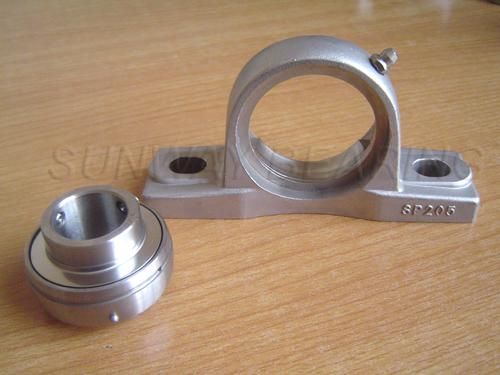Let me start by saying I am entitled to be wrong on this.
The top picture is a sealed bearing and will not benefit from greasing the zirc fitting. The grease will simply squirt out of the housing and make a mess. You do not want the sealed bearing to spin in the housing and that can happen with too much grease. Remove these by using a rod inserted into the bearing and rotating the bearing in the housing 90 degrees to line up with the cut out notches you can see in the rim of the housing, the tap out from the back. The housing has a zirc fitting so you can replace the sealed bearing with an open bearing like the second picture.
the 2nd bearing will benefit from occasional, sparing grease. Too much grease has the rollers lock up and hydroplane on the grease and wear one side of the roller(s) flat causing premature failure. After a bearing failure exactly like this on my KMG, I called Rob and he explained that to me. I took the bearing apart and that is exactly what happened. I rarely grease them any more and have far fewer failures.
Your mileage may vary. There is a lot of variables here: type of grease, volume, frequency, run time, phase of the moon, etc.



